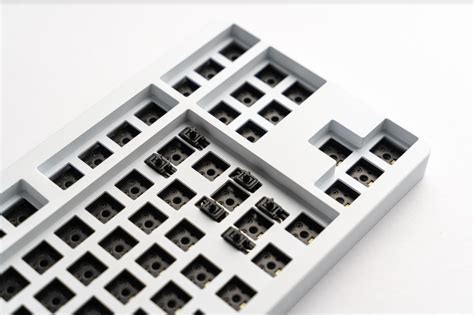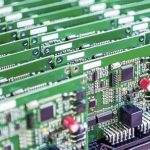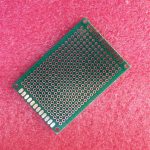Introduction to Barebone PCB
A barebone PCB, also known as a Prototype PCB or development board, is a printed circuit board that provides the basic components and connectors needed to create a functioning electronic device or system. Unlike a fully-equipped PCB used in mass production, a barebone board includes only the essential elements, allowing engineers and hobbyists to customize and expand upon it for their specific application.
Barebone PCBs offer several advantages:
- Cost-effectiveness: By including only necessary components, barebone PCBs are more affordable than full-featured boards.
- Flexibility: Users can add or remove components based on their needs, making barebone PCBs adaptable to various projects.
- Rapid prototyping: Barebone boards allow for quick testing and iteration of designs before committing to a final product.
Key Components of a Barebone PCB
A typical barebone PCB includes the following essential components:
| Component | Description |
|---|---|
| Microcontroller/Processor | The “brain” of the board, responsible for executing instructions and controlling other components. Common options include Arduino, Raspberry Pi, and various ARM-based processors. |
| Power Supply | Provides regulated power to the board and its components. This may include a voltage regulator, power jack, or USB port for external power input. |
| Input/Output (I/O) Connectors | Allows the board to interface with external devices, such as sensors, actuators, displays, and communication modules. Common I/O connectors include pin headers, USB ports, and audio jacks. |
| Expansion Slots | Enables users to add functionality to the board through additional modules or shields. Examples include SD card slots, HDMI ports, and GPIO headers. |
Choosing the Right Barebone PCB
When selecting a barebone PCB for your project, consider the following factors:
1. Compatibility
Ensure that the barebone board is compatible with your desired components and peripherals. Check the processor architecture, operating voltage, and available interfaces.
2. Performance
Consider the processing power and memory capacity required for your application. More complex projects may demand higher-end processors and additional RAM.
3. Form Factor
Barebone PCBs come in various sizes and shapes, from compact single-board computers to larger development boards. Choose a form factor that fits your project’s physical constraints and portability requirements.
4. Community Support
Popular barebone platforms like Arduino and Raspberry Pi have large user communities, extensive documentation, and a wide range of compatible accessories. Opting for a well-supported platform can simplify troubleshooting and expand your project’s capabilities.
Setting Up and Using a Barebone PCB
1. Gathering Required Components
In addition to the barebone PCB, you’ll need the following items to get started:
– Power supply (e.g., AC adapter, battery)
– USB cable for programming and power
– Jumper wires for making connections
– Breadboard for prototyping
– Any additional sensors, actuators, or modules for your project
2. Connecting Power and Peripherals
- Connect the power supply to the designated power input on the barebone PCB. Ensure that the voltage and polarity are correct to avoid damaging the board.
- Use jumper wires to connect any necessary sensors, actuators, or modules to the appropriate I/O pins on the board. Refer to the barebone PCB’s pinout diagram for guidance.
- If using a breadboard for prototyping, use jumper wires to make connections between the barebone PCB and the breadboard.
3. Programming the Barebone PCB
- Download and install the appropriate Integrated Development Environment (IDE) for your barebone platform. Popular options include:
- Arduino IDE for Arduino-based boards
- Raspberry Pi OS and Python IDLE for Raspberry Pi
- Mbed Studio for ARM-based boards
- Connect the barebone PCB to your computer using a USB cable.
- Open the IDE and select the correct board type and serial port from the settings menu.
- Write or load the desired code for your project in the IDE.
- Compile the code and upload it to the barebone PCB.
- Test and debug your project as needed.

Example Projects Using Barebone PCBs
1. Weather Station
Create a simple weather station using a barebone PCB, temperature and humidity sensor, and a small LCD display. The sensor data can be processed by the barebone board and displayed on the LCD in real-time.
2. Remote-Controlled Robot
Build a robot using a barebone PCB, motor driver, and wireless communication module. Control the robot’s movements remotely using a smartphone app or another barebone PCB acting as a controller.
3. Smart Home Automation
Develop a smart home automation system using multiple barebone PCBs as nodes. Each node can control and monitor various appliances, lights, and sensors, communicating through a wireless network protocol like Zigbee or Wi-Fi.
Troubleshooting Common Issues
| Issue | Possible Solution |
|---|---|
| Board not powering on | Check power supply connections and voltage. Ensure that the power switch (if present) is in the “on” position. |
| Code not uploading | Verify that the correct board type and serial port are selected in the IDE. Check the USB cable connection. |
| Components not working | Double-check wiring connections and pinouts. Ensure that the components are compatible with the barebone PCB’s voltage levels. |
| Inconsistent behavior | Check for loose connections or short circuits. Verify that the code is free of errors and uploaded correctly. |
FAQ
1. Can I use any programming language with barebone PCBs?
The choice of programming language depends on the specific barebone platform and its supported IDEs. Arduino boards primarily use C++, while Raspberry Pi supports Python, C++, and other languages. Some platforms may have their own proprietary languages or support multiple options.
2. How do I add more functionality to my barebone PCB?
Barebone PCBs often have expansion slots or headers that allow you to connect additional modules, shields, or breakout boards. These add-ons can provide features like GPS, wireless communication, motor control, or sensor integration. Ensure compatibility with your specific barebone board before purchasing any extras.
3. Can I design my own custom barebone PCB?
Yes, with the right skills and tools, you can design and manufacture your own custom barebone PCB. This involves creating a schematic, designing the PCB layout, and sending the files to a PCB Fabrication service. Custom designs allow for tailored features and form factors but require more time and effort compared to using off-the-shelf barebone boards.
4. Are barebone PCBs suitable for commercial products?
Barebone PCBs are primarily used for prototyping and small-scale projects. While they can be used in commercial products, they may not be the most cost-effective or efficient option for large-scale production. For commercial applications, it’s often better to design a custom PCB that includes only the necessary components and optimizes for manufacturing.
5. How do I choose between different barebone PCB platforms?
When choosing between barebone PCB platforms like Arduino, Raspberry Pi, or BeagleBone, consider your project’s specific requirements. Factors to consider include processing power, memory, I/O capabilities, power consumption, and community support. Research the strengths and limitations of each platform to determine which one best aligns with your needs.
Conclusion
Barebone PCBs offer a versatile and cost-effective solution for prototyping and developing electronic projects. By providing the essential components and allowing for customization, these boards enable users to create a wide range of devices and systems.
When working with barebone PCBs, it’s crucial to choose the right platform, gather the necessary components, and follow best practices for setup and programming. With the proper tools and knowledge, barebone PCBs can help bring your electronic ideas to life, whether you’re a beginner or an experienced engineer.
As you explore the world of barebone PCBs, remember to leverage community resources, troubleshoot common issues, and continually expand your skills. With dedication and creativity, the possibilities for innovation are endless.






Leave a Reply